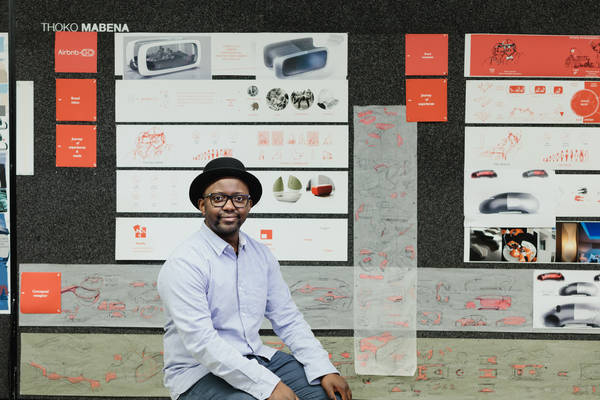profile / alumni / transportation-design
January 04, 2017
Writer: Solvej Schou
Images: Courtesy of Wei Cheng Chou
TRANSPORTATION DESIGN ALUM WEI CHENG CHOU CONCEPTUALIZES EMORA BRACELET
How does a transportation designer go from conceptualizing cars to conceptualizing a high tech fashion bracelet that taps into users’ emotions?
For alumnus Wei Cheng Chou (BS 2015 Transportation Design), both involve thinking about product design and human interaction, just on different scales. When Chou came up with the initial idea for the Star Trek-esque interactive mood bracelet Emora—pronounced “ee-mo-rah”—after graduating last Spring term, he drew inspiration from studying with ArtCenter Product Design instructor Jeff Higashi (BS 95) and Transportation Systems and Design executive director Geoff Wardle.
Chou’s friend Yong-Jun Lin—a computation and neural systems Caltech PhD candidate—and Higashi had helped Chou create an interactive model for the interior design of a Tesla car for Chou’s graduation show project. Chou applied Higashi’s knowledge of ergonomics and user experience to his own approach. In September 2015, Chou and Lin co-founded product design startup InnoVart, and ArtCenter alumni Jo Wang (BS 15 Product Design) and Timothy Jen (BS 16 Entertainment Design) joined the team. They pushed forward with the Emora as an entryway to later doing transportation design.

The Emora is a bracelet connecting people's feelings beyond words.
Wei Cheng Chou

"We decided to test if a team is strong enough to make a nice [small] product that’s well designed, full of tech and intuitively interactive as our beginning point,” said Southern California based Chou, 34, who also has a master’s degree in electrical engineering from his native Taiwan. “The Emora is a bracelet connecting people’s feelings beyond words.”
A prototype for the smooth stainless steel and plastic bracelet will debut at the Consumer Electronics Show (CES) in Las Vegas on Jan. 5, followed by a Kickstarter campaign to raise money launching Jan. 18. A chip inside the device, like an electrocardiogram, detects people’s heartrates, and a light glowing from the bracelet pulsates with each heartbeat, showing varying levels of intensity. Users choose a different color to represent each of their moods.
“We thought about what can catch people’s eye, and how color is very related to emotions and feelings,” said Chou. “A bracelet has more capability to play with interaction than a necklace or earrings.”
The Emora vibrates and lights up to alert the user to incoming calls, texts and also a change in mood for three other individuals, from a friend to a romantic partner. It will also include a mobile phone mood map with the ability to track how users feel in different locations.
In the future, Chou said, he would like to design semi-autonomous or autonomous vehicles, sticking even closer to his ArtCenter roots.
“That’s my dream,” Chou said of designing driver-less cars. “They will help people to have a better life.”
Related

profile
Whether Designing for the Road or a Screen, Alum Daniel Mai Sets Human-Centric Solutions as His Destination
April 18, 2017

feature
Knowledge is Power: A Transportation Design Student’s Superhero Journey from Zimbabwe to ArtCenter
March 22, 2017

video



